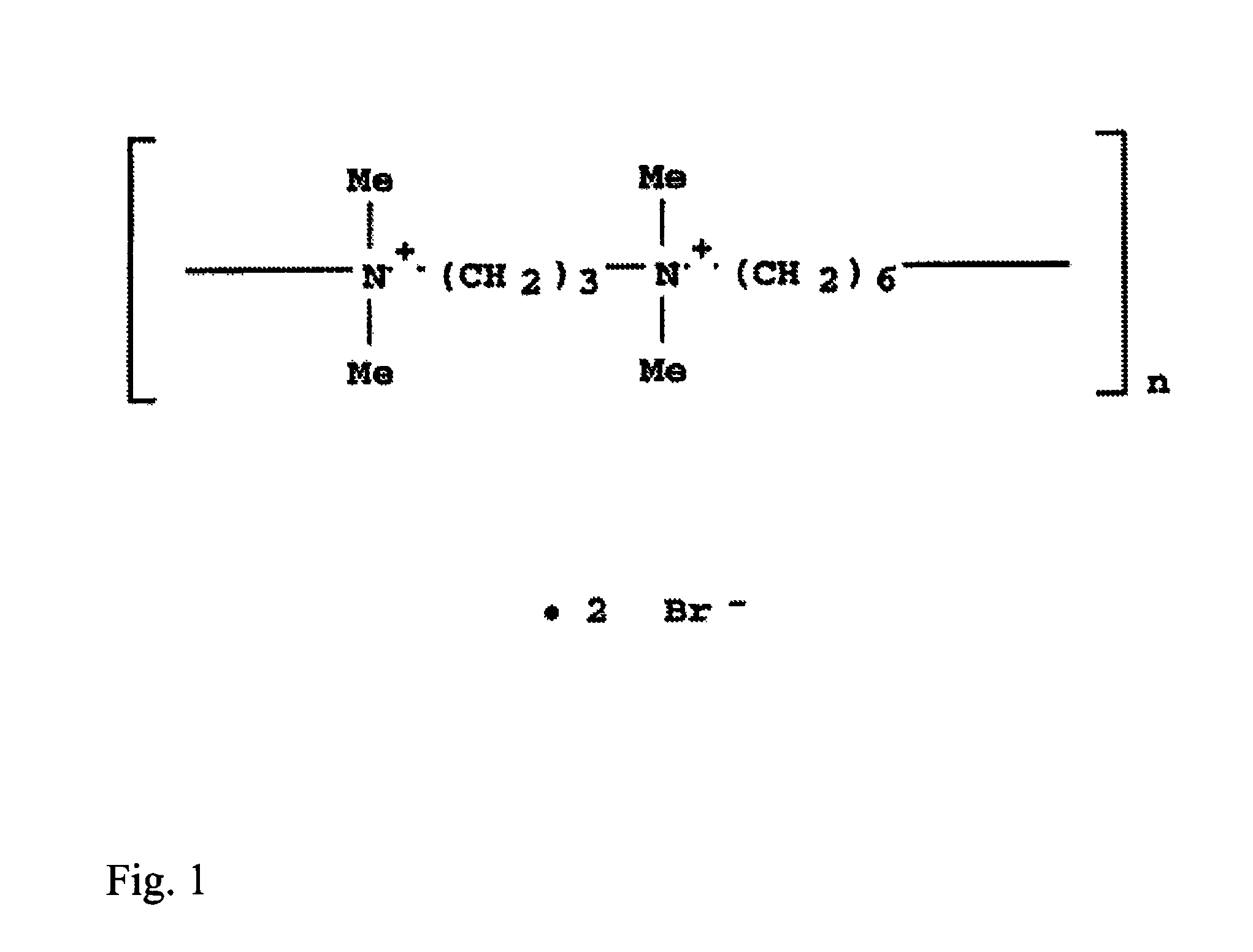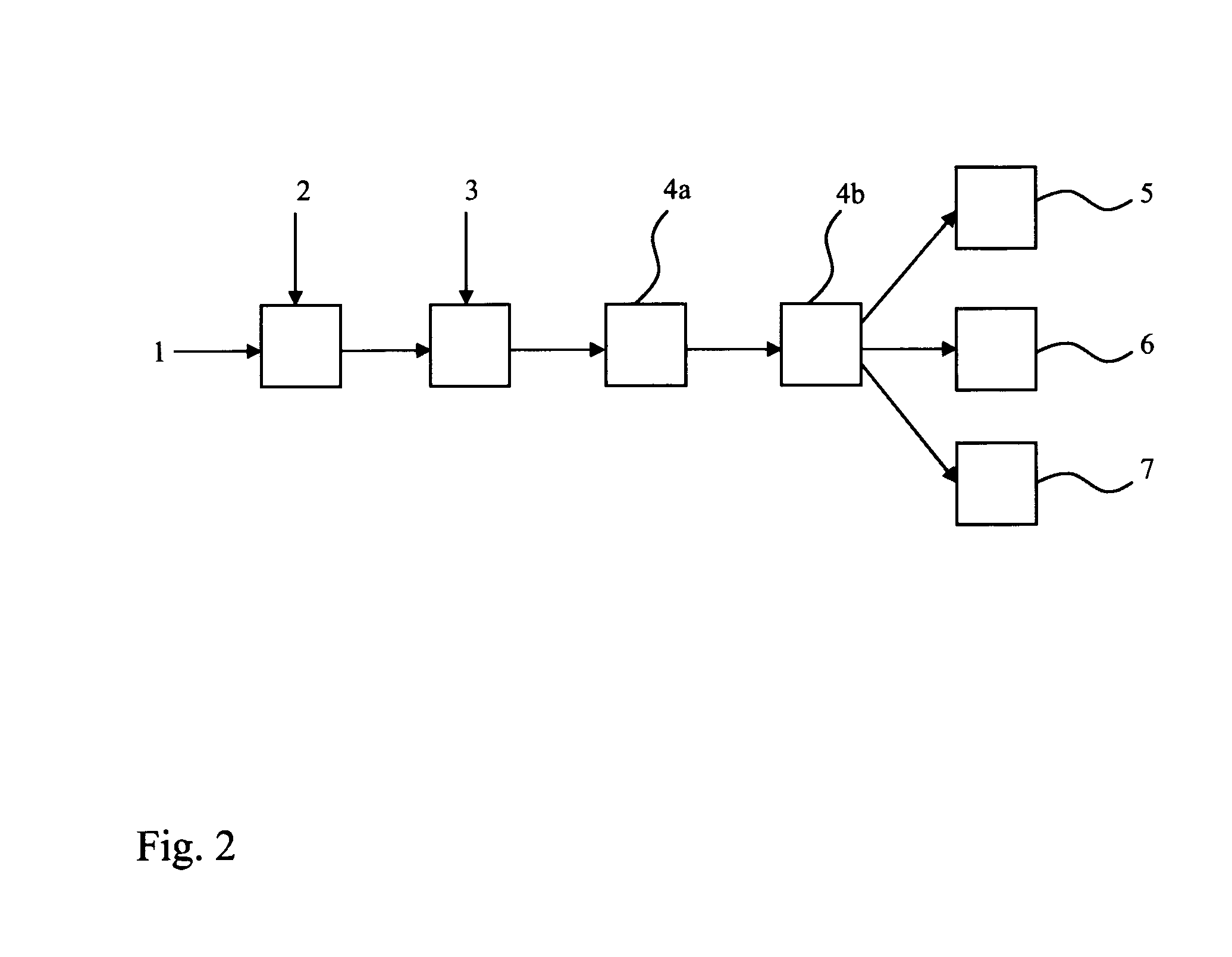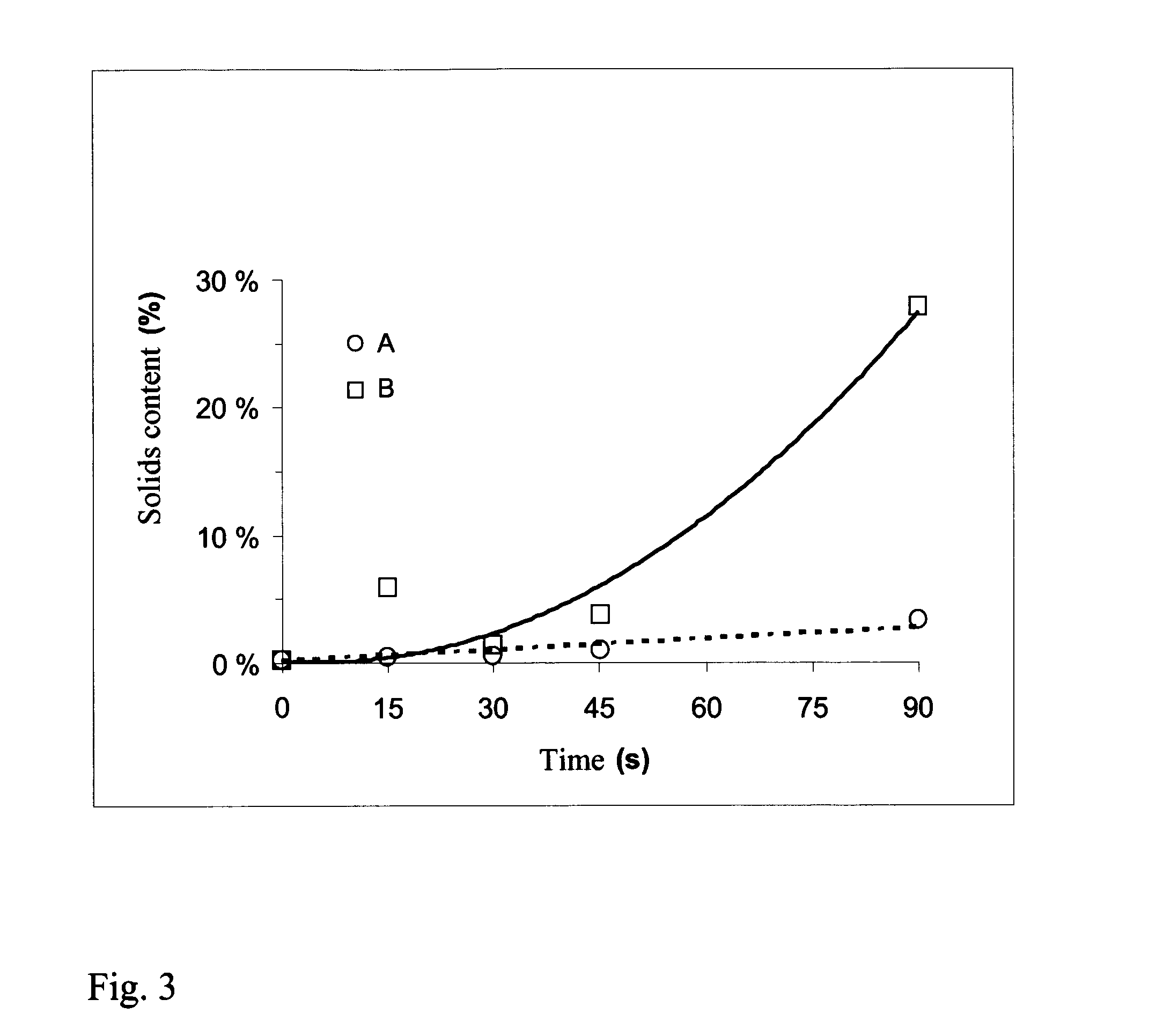Method for improving the removal of water
a technology for water removal and water treatment, applied in the field can solve problems such as disassembly and removal of water, and achieve the effect of improving the removal of water
- Summary
- Abstract
- Description
- Claims
- Application Information
AI Technical Summary
Benefits of technology
Problems solved by technology
Method used
Image
Examples
example 1
[0048]FIG. 2 illustrates the procedure of one method according to the invention as a simplified diagram.
[0049]In the method illustrated in FIG. 2, there is formed a fiber product containing microfibrillated cellulose from which water is removed. Microfibrillated cellulose 2 is first added to the fiber composition followed by a cationic polyelectrolyte 3. The employed cationic polyelectrolyte is polybrene, the structure of which is presented in FIG. 1 and which has a low molecular weight and a molecular weight of less than 10000. Water is removed from the fiber mixture thus formed by a two-step water removal device 4a,4b based on microfiltration. The fiber mixture from which water has been removed is led to the manufacture of a fiber suspension 5 or pulp 6 or to the manufacture of a product 7 containing microfibrillated cellulose.
example 2
[0050]A suspension composition containing microfibrillated cellulose was formed with a dry matter content of 0.2%.
[0051]2 different series of samples were formed from the suspension, wherein a cationic polyelectrolyte was not added to the first samples A and polybrene 10 mg / g as the cationic polyelectrolyte was added to the second samples B. The chemical structure of polybrene is presented in FIG. 1. The pH of the samples was approximately 8.
[0052]The samples were microfiltered using a 5 μm membrane and an overpressure of 0.5 bar to remove water by dead-end filtration. The dry matter content in samples A was approximately 2%. For samples B, a dry matter content of approximately 30% was obtained in similar conditions. It was discovered that the rate of water removal was also increased with samples B. FIG. 3 presents the effect of the addition of the cationic polyelectrolyte on the solid matter content of microfibrillated cellulose.
example 3
[0053]A composition according to sample B according to Example 2 containing microfibrillated cellulose and 9 mg / g of a cationic polyelectrolyte was added to pulp by 0 to 6%. The employed pulp was pine kraft pulp with pulp consistency of 0.3% and a pH of approximately 8. It was discovered that the removal of water from the pulp was improved relative to a condition where microfibrillated cellulose but not a cationic polyelectrolyte had been added to the pulp, or where neither microfibrillated cellulose nor a cationic polyelectrolyte had been added to the pulp.
[0054]FIG. 4 presents the effect of the addition of microfibrillated cellulose and / or a cationic polyelectrolyte on the time of water removal from pine kraft pulp. The figure shows that the time of water removal was reduced when a cationic polyelectrolyte had been added to the pulp in addition to microfibrillated cellulose.
[0055]The removal of water was carried out using a pressure difference of 0.15 bar with underpressure filtra...
PUM
| Property | Measurement | Unit |
|---|---|---|
| number-average diameter | aaaaa | aaaaa |
| number-average diameter | aaaaa | aaaaa |
| diameter | aaaaa | aaaaa |
Abstract
Description
Claims
Application Information
 Login to View More
Login to View More - R&D
- Intellectual Property
- Life Sciences
- Materials
- Tech Scout
- Unparalleled Data Quality
- Higher Quality Content
- 60% Fewer Hallucinations
Browse by: Latest US Patents, China's latest patents, Technical Efficacy Thesaurus, Application Domain, Technology Topic, Popular Technical Reports.
© 2025 PatSnap. All rights reserved.Legal|Privacy policy|Modern Slavery Act Transparency Statement|Sitemap|About US| Contact US: help@patsnap.com



